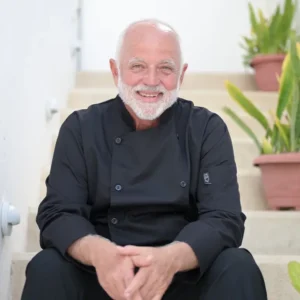In Mexico, food has a soul. It not only nourishes the body: it nurtures memory, affection, and roots. Each dish is a living story that travels from generation to generation, and on no other day of the year is this felt as intensely as during the Day of the Dead. This celebration, recognized by UNESCO as Intangible Cultural Heritage of Humanity, is much more than a tradition: it is a dialogue between the world of the living and that of those who have passed, a loving reunion where flavors become the language of the soul.
On every altar, among candles, marigolds, and copal, food occupies a central place. It is offered not only as nourishment but as a symbol of affection and gratitude. The dishes placed are the favorites of the deceased, because it is believed that during these nights, they return to enjoy what they loved most. Thus, the aromas that fill the homes are an invitation: the smell of freshly baked bread, hot chocolate, mole bubbling in the pot, candied pumpkin caramelizing slowly.

The pan de muerto, perhaps the most emblematic of all, holds deep significance. Its circular shape represents the eternal cycle of life, while the strips that adorn it symbolize the bones of those we remember. Sprinkled with sugar or scented with orange, it is a gesture of sweetness that connects the present with the past. When tasting it, we are reminded that life continues in every shared bite.
Mole, on the other hand, embodies the complexity of Mexican history. It is the result of mestizaje, a fusion of pre-Hispanic and European ingredients that demands patience and devotion. Its blend of chiles, cacao, spices, and seeds not only delights the palate but also tells centuries of encounters and transformations. Preparing it for the Day of the Dead is an act of love: a dish that requires time, care, and dedication, just like the memory of those we honor.

Tamales, present on altars and at family gatherings, are another ancestral offering. Their masa represents the body, their filling the flavors of life, and the leaf that wraps them symbolizes the final embrace of the earth. Making tamales is a communal ritual, a moment when hands work together, voices intersect, and memory is shared. When opening one, we feel that each layer holds a story, a presence, a memory.
And then there are sweets, sugar skulls, atole, and hot chocolate, which fill the offerings with color and sweetness. Each has its own symbolism: sugar represents the joy of living, chocolate the strength of the spirit, and atole, warm and thick, the comfort that reassures in the early morning. These flavors remind us that the Day of the Dead is not a sad celebration but a luminous festival where life and death embrace.
Gastronomy, in this context, is a bridge. It connects the past with the present, absence with presence, remembrance with the act of sharing. It is a way of saying: you are still here, we remember you, we celebrate you. In Mexico, cooking is also a form of faith, a space where time dissolves and flavors endure.
At 10 Experiences Tour, this vision becomes tangible. Each dish, each aroma, each story shared during the experience seeks to connect people with the essence of Mexico: its land, culture, and spirituality. The Day of the Dead is a constant inspiration for us because it represents what we believe: that eating is a way of feeling, remembering, and paying tribute to those who taught us to enjoy life with all our senses.
In a space where art, music, and gastronomy converse, we celebrate the union of tradition and the present. Each experience is a contemporary offering: a tribute to our roots, to flavors that are never forgotten, and to stories that remain alive.
Because in Mexico, even when we speak of death, we do so celebrating life. And in every dish we share, memory stays alive—aromatic, vibrant, and eternal—like the very heart of our culture.
Bibliography.
- Brandes, Stanley. “Sugar, Colonialism, and Death: On the Origins of Mexico’s Day of the Dead.” Comparative Studies in Society and History, 1997.
- Godoy, Maria. “Sugar Skulls, Tamales And More: Why Is That Food On The Day Of The Dead Altar?”. NPR, noviembre de 2016.
- Kennedy, D. Cocina esencial de México. Fondo de Cultura Económica.
- Muñoz Zurita, Ricardo. Diccionario enciclopédico de la Gastronomía Mexicana. Larousse Cocina.





